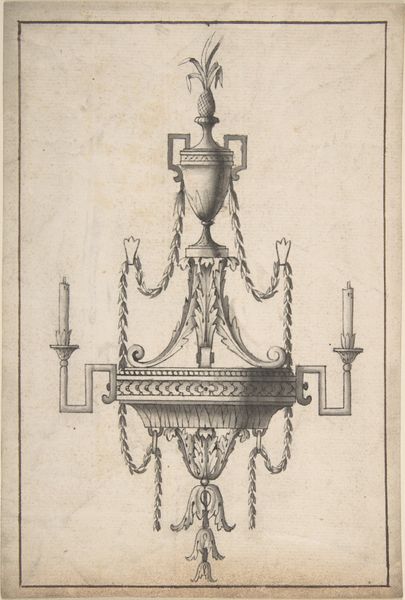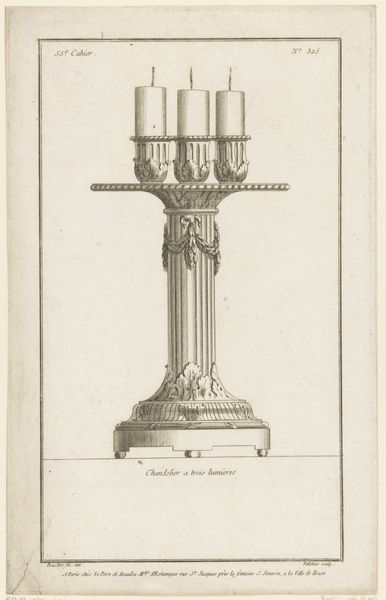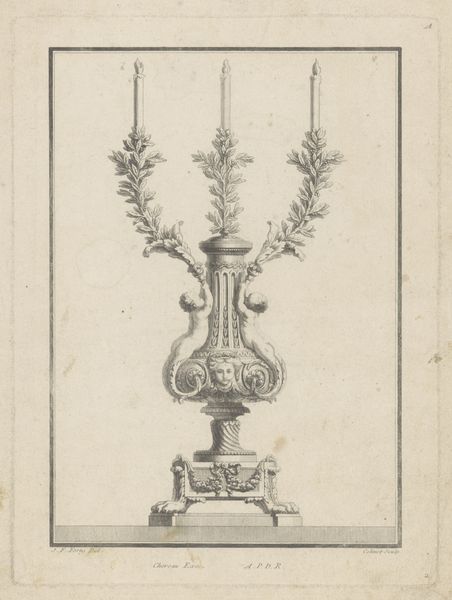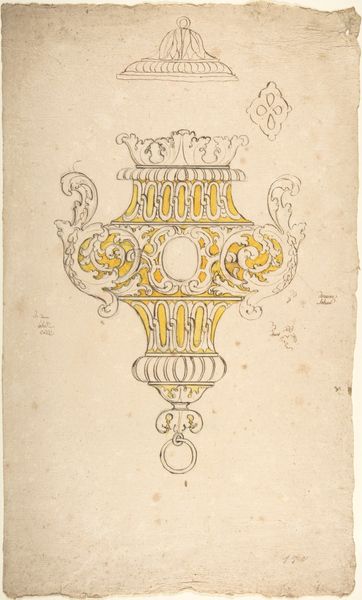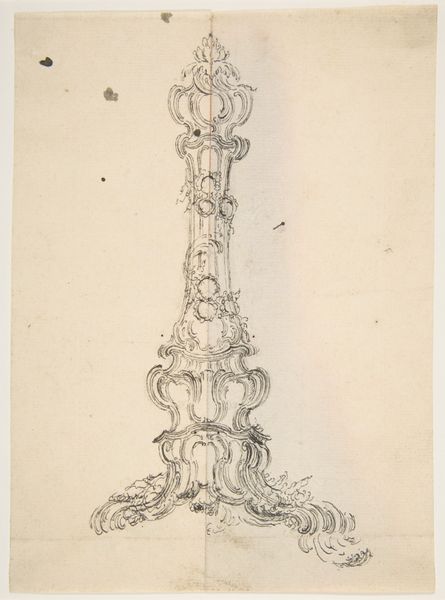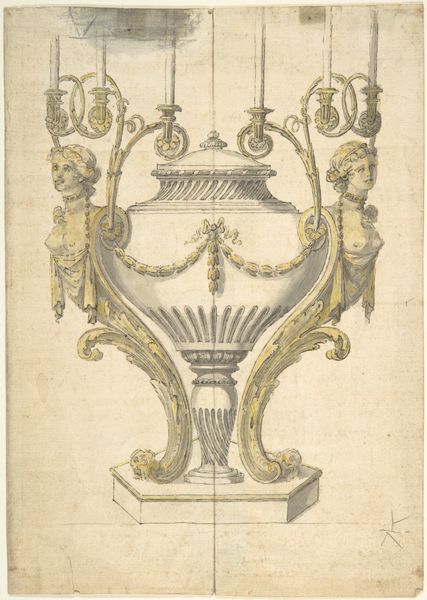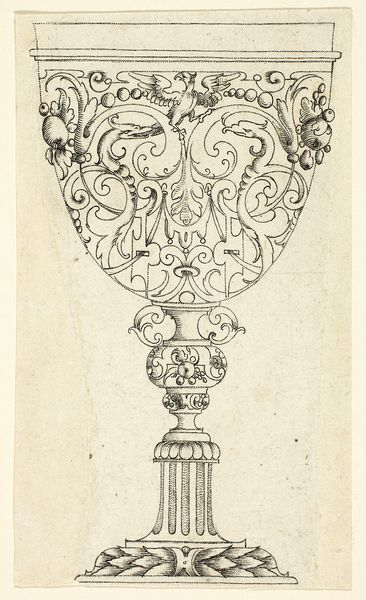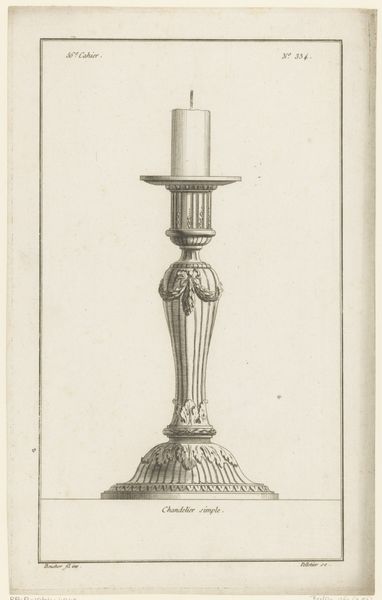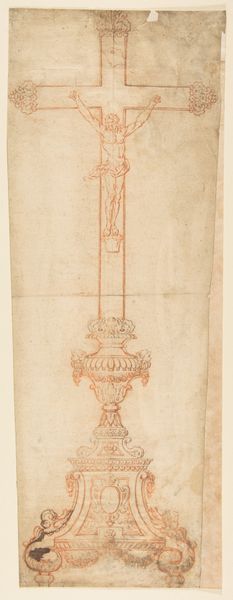
drawing, print, etching
#
drawing
#
neoclacissism
# print
#
etching
#
form
#
geometric
#
line
#
decorative-art
Dimensions: sheet: 16 1/8 x 10 1/2 in. (40.9 x 26.7 cm)
Copyright: Public Domain
Curator: Welcome. Before us, we have a 19th-century design for a chandelier, an etching now held at the Metropolitan Museum of Art. The artist, sadly, remains anonymous. Editor: It has this strangely muted, ethereal quality, almost like looking at the ghost of a chandelier rather than something meant for practical use. The precision of the lines against the aged paper gives it an incredible feeling of fragility. Curator: Note the pronounced neoclassicism. The meticulous linear details, the symmetry… it speaks of a deep investment in form. We see a carefully planned object, more about ideals of proportion than about simple illumination. Editor: I see something more complicated. Chandeliers like this weren't simply about proportion; they were symbols of wealth and power, weren't they? Light itself was a commodity, controlled and displayed. To own a chandelier like this wasn't just aesthetic, it was political. Curator: Perhaps. Yet the beauty of the design itself seems to transcend that. Look at the geometric perfection, the interplay of lines and curves. It invites us to contemplate pure form, devoid of immediate social messaging. The chandelier’s structure acts as its own signifier, beyond cultural interpretation. Editor: But can we really ignore that chandeliers served as a signifier in spaces of gatherings—ballrooms and palaces? A space filled by mostly affluent people? How are they experiencing this as they dance below this object? The weight, quite literally, of history and power… I'm wondering how much that affects the reading of this artwork as "pure form". Curator: You make a salient point. Perhaps the most compelling approach lies in recognizing both the formal sophistication *and* the cultural weight, the tension between them creating something richer than either alone. Editor: Agreed. To strip the piece of all its symbolic burden feels reductive, almost like pretending it existed in a vacuum. But you're right, focusing solely on context and function risks obscuring the undeniable artistic merit present in this meticulous rendering. Curator: Ultimately, I’m struck by the enduring appeal of design that holds up both through theoretical interrogation and pure, sensory enjoyment. Editor: Yes, seeing it this way bridges both approaches into what I'm taking away now. A synthesis... that’s illuminating!
Comments
No comments
Be the first to comment and join the conversation on the ultimate creative platform.

